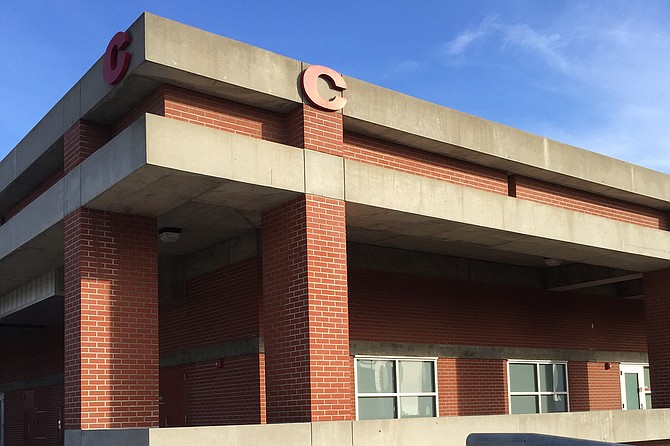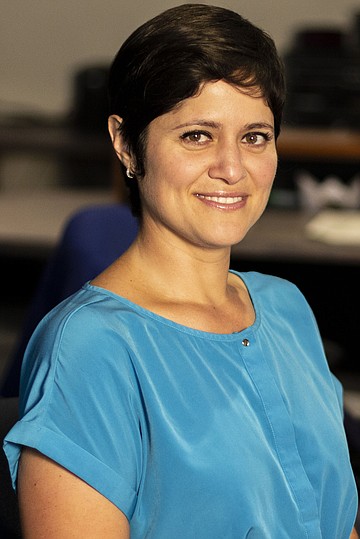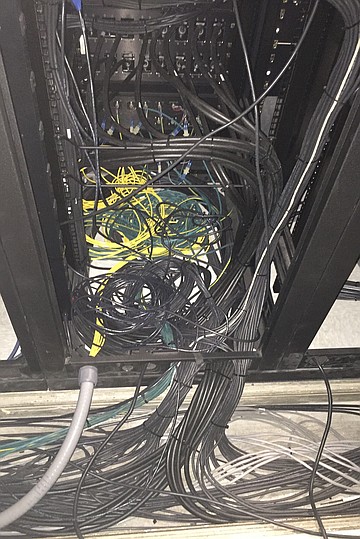 Facebook
Facebook
 X
X
 Instagram
Instagram
 TikTok
TikTok
 Youtube
Youtube

In a recent post, the San Diego Community College District News Center crowed that a “process called re-funding” of its Propositions S and N bonds will save taxpayers $150 million. The claim is ironic, say some insiders, given how much overruns on the bond-funded building projects, and overall deficit spending the last three years, are costing taxpayers already.

Prop S was approved by voters in 2002, and Prop N in 2006, for the district to use bonds of $685 million and $870 million respectively to fund primarily a massive building program that up to now has produced 36 new buildings and 18 renovations at its City, Mesa, Miramar, and Continuing Education (Serra Mesa) campuses. The re-funding is possible, according to the post, due to the district’s stellar bond ratings from S&P Global and Moody’s Investors Service. The ratings promise to pave the way for the passage of future bonds, according to district officials.
As an example of how the public is getting the shaft, take the construction of four buildings at downtown’s City College that are supposedly “complete.” The mismanagement began in the college’s C Building.

At San Diego City College, says Laura Castañeda, there has been, for a long time, “a pattern of sweeping problems under the rug.” Castañeda, a former television news broadcaster, was chair of the college’s Radio, TV and Film department from 2002 until 2016 when she resigned the position. Two years later, she gave up her full-time teaching position. “I’d had enough,” she tells me.
In 2004, Castañeda began noticing “irregularities” in the working habits of her department’s engineer. Gerald “Larry” Quick had been ensconced in the position for many years and was recognized as an accomplished technician who, in Castañeda’s eyes, “could fix anything.”
By 2010, she says, the irregularities had become so disruptive that Castañeda was reporting them to administrators, especially her dean Trudy Gerald. The behaviors were alienating faculty and scaring students. Quick was often thought to be drunk when at work, or high on drugs. He would miss an unreasonable number of workdays. But in that year the college put Quick in charge of reconstructing the C Building on campus, which housed Radio, TV and Film, among a few other programs.
On March 15, 2015, Claudia Russell, interim general manager of KSDS, the college’s Jazz 88 radio station, reported by email from the station to Castañeda and Gerald that Quick had locked himself in the engineering room and was loudly ranting and raving. “Listen to the attached audio clip,” wrote Russell, “You should be alone with doors closed when you do. It’s profane.”
Russell went on to worry that Quick “will crack at any moment and damage station/department equipment or resources. I’m concerned that we have no immediate engineering back-up in place should he suddenly not be available.”

In response, Castañeda emailed college president Anthony Beebe and Randy Barnes, vice president of instruction, that there were already “10 years of documentation of on-going concerns with [the] Chief Broadcast Engineer…. Yet, very little has been done by the district regarding the continued absenteeism and alleged drug and alcohol abuse during working hours.... All of these issues have been repeatedly reported to Deans, Vice Presidents of Instruction and Human Resources over the years. Trudy Gerald was made aware of this incident but has not responded to me about what to do….”
Barnes promised to set up a meeting with human resources, but no action was taken.
In late fall 2015, after Quick had disappeared from campus in another string of absences, Dean Gerald finally replaced him with another engineer. But on December 15, Castañeda emailed a new dean of instruction, Renee Kilmer, saying, “It has come to our attention that Larry Quick is still meeting with the integrators of the C building. It makes no sense to tell… the new engineer that he has taken over the project if Larry is still attending the meetings…. This will only make it more difficult for all the tasks to be completed that are in jeopardy as it is. Please make it clear to Larry Quick that he has been replaced on this project.”
Less than five hours later, Kilmer announced that she, Dean Gerald, and two other administrators met and decided that “Larry has not been replaced.” The reasoning was that “since Larry has returned to work full time and is most knowledgeable about the project... it is best for him to continue.”
Castañeda says at that time, as faculty and students were beginning to anticipate moving into the renovated C Building in the spring, “there was no inventory, [yet other] items had been ordered that were not needed.”
Almost two months later, on February 10, 2016, Quick was arrested for theft of college audio-visual equipment, some of which, at least, he had sold to pawn shops. He spent 16 days in jail and later was sentenced to 15 days public service. He had worked at the college for 38 years and had risen to $98,000 in annual salary. He resigned from the district in March 2016. But there was no telling how much he had pilfered over the years.
In between, however, on January 16, 2016, faculty were given their first walk-through of the C Building, which by then the college had declared completed.
But many specifications the building was supposed to feature were missing. The crucial wiring for camera work and other technical activities had been left unconnected in visibly chaotic multi-colored tangles. Neither students nor professors would have been able to do the work necessary for the class offerings the college advertises for one of its most notable programs.
Students were up in arms. Along with Castañeda and several other faculty members, they decided to speak out at a 2016 meeting of the Props S and N Oversight Committee at the district’s Mission Valley headquarters “The vice president of instruction called me at home to demand we stay away,” says Castañeda. “And the suggestion was that my job was at stake. I said, ‘We’re coming.’
“But when we got there, [District Chancellor] Constance Carroll threw a fit,” Castañeda recalls “She told me that that meeting was not where the topic should be brought up. She was livid and got all red in the face, she was so adamant — and angry. ‘Our board and I will take care of the matter through proper channels,’ she said. ‘But you never listen,’ I told her. So the students spoke out strongly at the meeting about what the delays in finishing a renovation that had been promised for the spring semester would do to their academic programs. At the end of the meeting one of the oversight committee members came up from behind and whispered in my ear, ‘You might want to think about looking for a new job.’”
From that point forward a number of journalism students in the Radio, TV and Film department began digging into three other construction projects that were still in progress on campus, the A Building for administration offices, D for the cafeteria, and T for technology and business. The students obtained project “change orders” for spending beyond the originally negotiated cost of the projects, suggesting the construction would have big cost overruns.
The student investigations were broadcast during a September 17, 2018, airing of City College’s TV news program called Newscene. On that night, the program featured a report by student Celia Jimenez featured a report on the buildings’ construction progress by student Celia Jimenez. Her segment was introduced by a student anchor stating that finishing the construction was going to cost $10,000,000 beyond budget. Cost overruns of 10 percent or more require the community college district’s board of trustees to appropriate them. That had been done nine days earlier, on September 13, 2018. The A Building renovation — administration office — had the highest change order percentage at 30.3 percent, according to an October 2, 2019, Proposition S and N - Project Summary Table.
Jimenez still has a few credits to earn before graduating from City College. I spoke with her by phone, as she left San Diego to take a news reporting job for Univision in the Bay Area. “I’m doing the same kind of work for Univision as I did at City for Newscene, only I have to do it in one day instead of a week,” Jimenez tells me.
The report Jimenez gave about the City College buildings on September 22, 2018, can be seen on YouTube. It featured interviews with project manager Tom Fine, vice chancellor of facilities management Christopher Manis, and City College president Ricky Shabazz. Each of the men interviewed named a reasonable excuse for the cost overrun, such as the discovery of a leak in the A Building’s roof that had not been noticed at the time of the project’s initial cost estimate, and the discovery of mold in another building. President Shabazz cited inflation of labor and materials in an economy that has grown since the projects’ original budgeting. But many of the change requests have nothing to do with those issues, and their “Reason[s] for Change” are labeled in the change order spreadsheet as “City College/Owner Request.” As one result, according to Castañeda, every new and updated building is equipped with at least one dishwasher.
“One thing that made me mad in the interviews I did,” Celia Jimenez tells me, “was a statement by Mr. Manis that he couldn’t explain some things because I wouldn’t understand them.”
Cost overruns and deficit spending generally, according to four anonymous sources who approached me, are characteristic of most, if not all, projects the district has undertaken recently. Indicative of the way the district handles deficits is its practice of “transfers out” and “transfers in” from one fund to another, making sure that when all is said and done its General Fund Unrestricted looks good.
The Executive Summary Narrative of the district’s 2019 - 2020 budget describes a significant instance of the approach: “On June 26, 2006, the District contributed $11 million [to establish a fund called Other Post-Employment Benefits] and adopted a goal of fully funding the plan by allowing the funds to grow with interest until it is sufficient to pay all future retiree benefit obligations. As of June 30, 2018 [its value]… had grown to $20,293,344.” The district then executed “a $14.7 million withdrawal … to address FY 2018-19 deficit spending, leaving a balance of $6,285,675 in the trust as of June 30, 2019.”
Several paragraphs later, the narrative unexpectedly cites caution. “All 73 [of California’s] districts are dependent upon the economic conditions of the state and the nation…. Governor Newsom continues to recommend that districts/colleges focus on addressing long-term obligations such as OPEB (Other Post-Employment Benefits) ... The Governor also continues to urge fiscal restraint and advises all districts and state agencies to prepare for the next recession, which many believe is long overdue and would result in an economic downturn ….” Therefore, “preparation must continue to be a part of the District’s annual fiscal planning to ensure the fiscal solvency of the District.”


In a recent post, the San Diego Community College District News Center crowed that a “process called re-funding” of its Propositions S and N bonds will save taxpayers $150 million. The claim is ironic, say some insiders, given how much overruns on the bond-funded building projects, and overall deficit spending the last three years, are costing taxpayers already.

Prop S was approved by voters in 2002, and Prop N in 2006, for the district to use bonds of $685 million and $870 million respectively to fund primarily a massive building program that up to now has produced 36 new buildings and 18 renovations at its City, Mesa, Miramar, and Continuing Education (Serra Mesa) campuses. The re-funding is possible, according to the post, due to the district’s stellar bond ratings from S&P Global and Moody’s Investors Service. The ratings promise to pave the way for the passage of future bonds, according to district officials.
As an example of how the public is getting the shaft, take the construction of four buildings at downtown’s City College that are supposedly “complete.” The mismanagement began in the college’s C Building.

At San Diego City College, says Laura Castañeda, there has been, for a long time, “a pattern of sweeping problems under the rug.” Castañeda, a former television news broadcaster, was chair of the college’s Radio, TV and Film department from 2002 until 2016 when she resigned the position. Two years later, she gave up her full-time teaching position. “I’d had enough,” she tells me.
In 2004, Castañeda began noticing “irregularities” in the working habits of her department’s engineer. Gerald “Larry” Quick had been ensconced in the position for many years and was recognized as an accomplished technician who, in Castañeda’s eyes, “could fix anything.”
By 2010, she says, the irregularities had become so disruptive that Castañeda was reporting them to administrators, especially her dean Trudy Gerald. The behaviors were alienating faculty and scaring students. Quick was often thought to be drunk when at work, or high on drugs. He would miss an unreasonable number of workdays. But in that year the college put Quick in charge of reconstructing the C Building on campus, which housed Radio, TV and Film, among a few other programs.
On March 15, 2015, Claudia Russell, interim general manager of KSDS, the college’s Jazz 88 radio station, reported by email from the station to Castañeda and Gerald that Quick had locked himself in the engineering room and was loudly ranting and raving. “Listen to the attached audio clip,” wrote Russell, “You should be alone with doors closed when you do. It’s profane.”
Russell went on to worry that Quick “will crack at any moment and damage station/department equipment or resources. I’m concerned that we have no immediate engineering back-up in place should he suddenly not be available.”

In response, Castañeda emailed college president Anthony Beebe and Randy Barnes, vice president of instruction, that there were already “10 years of documentation of on-going concerns with [the] Chief Broadcast Engineer…. Yet, very little has been done by the district regarding the continued absenteeism and alleged drug and alcohol abuse during working hours.... All of these issues have been repeatedly reported to Deans, Vice Presidents of Instruction and Human Resources over the years. Trudy Gerald was made aware of this incident but has not responded to me about what to do….”
Barnes promised to set up a meeting with human resources, but no action was taken.
In late fall 2015, after Quick had disappeared from campus in another string of absences, Dean Gerald finally replaced him with another engineer. But on December 15, Castañeda emailed a new dean of instruction, Renee Kilmer, saying, “It has come to our attention that Larry Quick is still meeting with the integrators of the C building. It makes no sense to tell… the new engineer that he has taken over the project if Larry is still attending the meetings…. This will only make it more difficult for all the tasks to be completed that are in jeopardy as it is. Please make it clear to Larry Quick that he has been replaced on this project.”
Less than five hours later, Kilmer announced that she, Dean Gerald, and two other administrators met and decided that “Larry has not been replaced.” The reasoning was that “since Larry has returned to work full time and is most knowledgeable about the project... it is best for him to continue.”
Castañeda says at that time, as faculty and students were beginning to anticipate moving into the renovated C Building in the spring, “there was no inventory, [yet other] items had been ordered that were not needed.”
Almost two months later, on February 10, 2016, Quick was arrested for theft of college audio-visual equipment, some of which, at least, he had sold to pawn shops. He spent 16 days in jail and later was sentenced to 15 days public service. He had worked at the college for 38 years and had risen to $98,000 in annual salary. He resigned from the district in March 2016. But there was no telling how much he had pilfered over the years.
In between, however, on January 16, 2016, faculty were given their first walk-through of the C Building, which by then the college had declared completed.
But many specifications the building was supposed to feature were missing. The crucial wiring for camera work and other technical activities had been left unconnected in visibly chaotic multi-colored tangles. Neither students nor professors would have been able to do the work necessary for the class offerings the college advertises for one of its most notable programs.
Students were up in arms. Along with Castañeda and several other faculty members, they decided to speak out at a 2016 meeting of the Props S and N Oversight Committee at the district’s Mission Valley headquarters “The vice president of instruction called me at home to demand we stay away,” says Castañeda. “And the suggestion was that my job was at stake. I said, ‘We’re coming.’
“But when we got there, [District Chancellor] Constance Carroll threw a fit,” Castañeda recalls “She told me that that meeting was not where the topic should be brought up. She was livid and got all red in the face, she was so adamant — and angry. ‘Our board and I will take care of the matter through proper channels,’ she said. ‘But you never listen,’ I told her. So the students spoke out strongly at the meeting about what the delays in finishing a renovation that had been promised for the spring semester would do to their academic programs. At the end of the meeting one of the oversight committee members came up from behind and whispered in my ear, ‘You might want to think about looking for a new job.’”
From that point forward a number of journalism students in the Radio, TV and Film department began digging into three other construction projects that were still in progress on campus, the A Building for administration offices, D for the cafeteria, and T for technology and business. The students obtained project “change orders” for spending beyond the originally negotiated cost of the projects, suggesting the construction would have big cost overruns.
The student investigations were broadcast during a September 17, 2018, airing of City College’s TV news program called Newscene. On that night, the program featured a report by student Celia Jimenez featured a report on the buildings’ construction progress by student Celia Jimenez. Her segment was introduced by a student anchor stating that finishing the construction was going to cost $10,000,000 beyond budget. Cost overruns of 10 percent or more require the community college district’s board of trustees to appropriate them. That had been done nine days earlier, on September 13, 2018. The A Building renovation — administration office — had the highest change order percentage at 30.3 percent, according to an October 2, 2019, Proposition S and N - Project Summary Table.
Jimenez still has a few credits to earn before graduating from City College. I spoke with her by phone, as she left San Diego to take a news reporting job for Univision in the Bay Area. “I’m doing the same kind of work for Univision as I did at City for Newscene, only I have to do it in one day instead of a week,” Jimenez tells me.
The report Jimenez gave about the City College buildings on September 22, 2018, can be seen on YouTube. It featured interviews with project manager Tom Fine, vice chancellor of facilities management Christopher Manis, and City College president Ricky Shabazz. Each of the men interviewed named a reasonable excuse for the cost overrun, such as the discovery of a leak in the A Building’s roof that had not been noticed at the time of the project’s initial cost estimate, and the discovery of mold in another building. President Shabazz cited inflation of labor and materials in an economy that has grown since the projects’ original budgeting. But many of the change requests have nothing to do with those issues, and their “Reason[s] for Change” are labeled in the change order spreadsheet as “City College/Owner Request.” As one result, according to Castañeda, every new and updated building is equipped with at least one dishwasher.
“One thing that made me mad in the interviews I did,” Celia Jimenez tells me, “was a statement by Mr. Manis that he couldn’t explain some things because I wouldn’t understand them.”
Cost overruns and deficit spending generally, according to four anonymous sources who approached me, are characteristic of most, if not all, projects the district has undertaken recently. Indicative of the way the district handles deficits is its practice of “transfers out” and “transfers in” from one fund to another, making sure that when all is said and done its General Fund Unrestricted looks good.
The Executive Summary Narrative of the district’s 2019 - 2020 budget describes a significant instance of the approach: “On June 26, 2006, the District contributed $11 million [to establish a fund called Other Post-Employment Benefits] and adopted a goal of fully funding the plan by allowing the funds to grow with interest until it is sufficient to pay all future retiree benefit obligations. As of June 30, 2018 [its value]… had grown to $20,293,344.” The district then executed “a $14.7 million withdrawal … to address FY 2018-19 deficit spending, leaving a balance of $6,285,675 in the trust as of June 30, 2019.”
Several paragraphs later, the narrative unexpectedly cites caution. “All 73 [of California’s] districts are dependent upon the economic conditions of the state and the nation…. Governor Newsom continues to recommend that districts/colleges focus on addressing long-term obligations such as OPEB (Other Post-Employment Benefits) ... The Governor also continues to urge fiscal restraint and advises all districts and state agencies to prepare for the next recession, which many believe is long overdue and would result in an economic downturn ….” Therefore, “preparation must continue to be a part of the District’s annual fiscal planning to ensure the fiscal solvency of the District.”
Comments